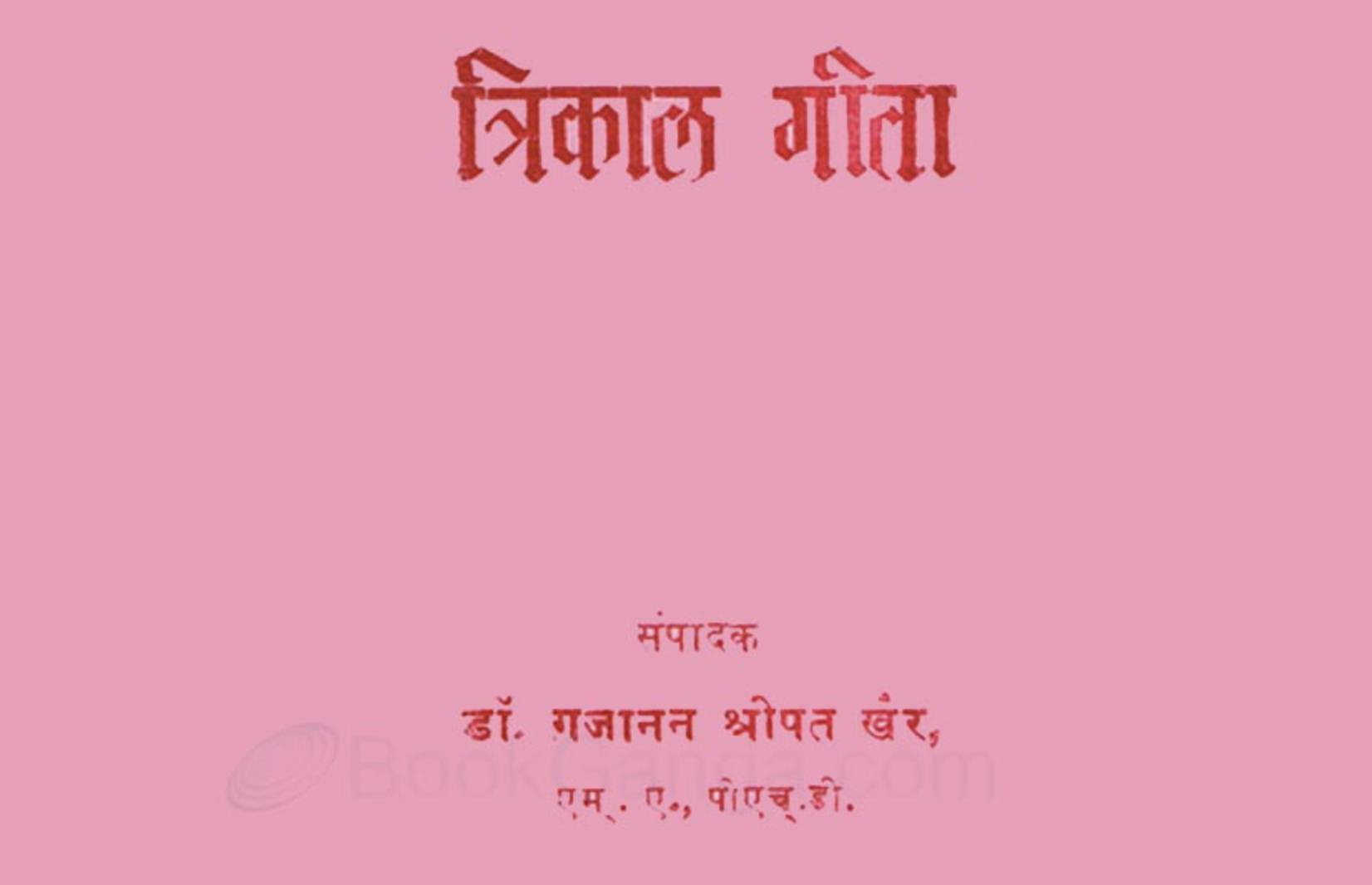Trikal Bhagwad Gita
Bhagwad Gita is one of the most popular Indian Scripture which has been read and translated worldwide in several countries. Popularly Gita is the sermon delivered by Lord Krishna to Arjuna in the battlefield of Epic Mahabharata when he faced his own near and dear as the opponent. Since it is a compact document of in-depth wisdom several treatises have been written by various authors in several languages for centuries.
While reading Gita, continuity of thoughts is not observed which makes it more complex for the ordinary reader. This led a few scholars to think that Gita was not written in one go and not by a single author.
This aspect was examined by Dr. G S Khair and summarised in his book “My quest for Original Gita” published in 1969. He laboriously examined each verse in terms of style, message, philosophy, words (terms) used by the writers in the backdrop of the prevailing culture, from 600 BC to 200 BC.
Based on his detailed research of several years he concluded that Gita was written by three writers at three different times. The original Gita was written somewhere 600 to 500 BC which had approximately 126 verses in 6 chapters. The second writer further added 119 verses in 6 new chapters after a century ( 500-400 BC) without disturbing the original 6 chapters. Around 300-200 BC third writer revamped, restructured the entire Gita with additional 455 verses and 6 additional chapters.

Thus the present Gita has 700 verses in 18 chapters. The third writer inserted several verses in chapters written by the first two writers and reorganised the chapters also. In the final version, the first 6 chapters are the same as were in original Gita, of course with additional verses. Chapter 7,9,10,11,12,16 added by third writer. Chapter 8,13,14,15 17 and 18 written by the second writer with additions by the third writer.
Thus it’s clear that present Gita was written in three periods or three Kals ( Tri-Kal). Accordingly, Dr. Khair has divided Gita into three parts and published as Trikal Gita in Marathi.
Dr. Khair further adds that insight does not reduce the importance of Gita in any way and neither the contributions by subsequent writers. Their contribution made Gita contemporary. The above insight made it easier to understand the philosophies propagated by three writers at different times. It also explains inconsistency in narration.
The book “My quest for original Gita” by Dr. Khair is a very well written book. In my opinion, before reading any treatise on Gita by any scholar one should first read this book and then treaties by any author can be read which will give better insight into the teachings of Gita.


